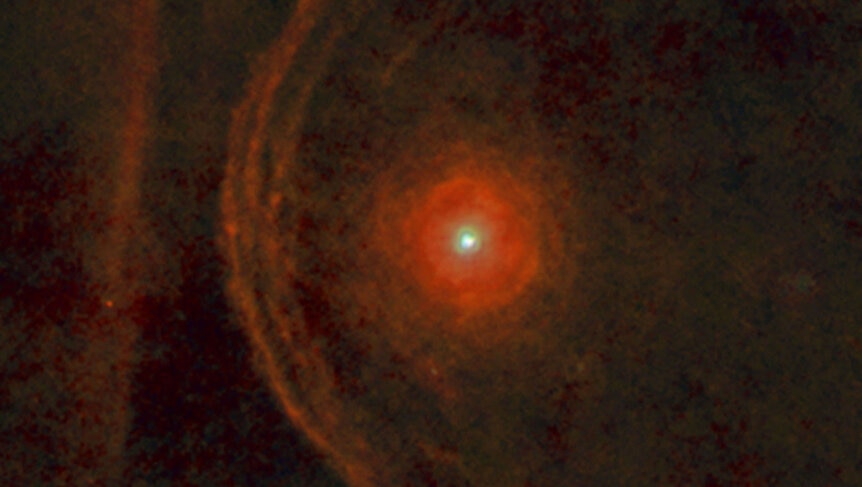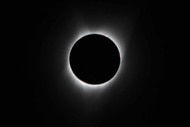Create a free profile to get unlimited access to exclusive videos, sweepstakes, and more!
Earth was rocked by a supernova that possibly brought on the Ice Age 2.5 million years ago

The suspicious blinking of the star Betelgeuse (not the Ghost With the Most) had everyone getting nervous about it going supernova. Paranoia surrounding Betelegeuse died down when scientists determined it wasn’t exploding any time soon—but Earth has felt the effects of a supernova before.
Stars that are at least ten solar masses explode at the end of their lives. This is the phenomenon otherwise known as a supernova, in which heavy elements such as iron and manganese, along with isotopes of those elements, are formed. Physicists from the Technical University of Munich have now found that certain isotopes of iron and manganese in Earth’s crust are evidence for a supernova that occurred relatively close to our planet 2.5 million years ago. It could have even been linked to the onset of the Ice Age that froze Earth around the same time.
Supernova evidence was hiding in layers of a ferromanganese crust at the bottom of the ocean. It was unearthed by using accelerator mass spectrometry to perform ultra-trace analysis, which detected unbelievably small amounts of geological evidence in just a few atoms of the isotopes manganese-53 (53Mn) and iron-60 (60Fe). Accelerator mass spectrometry is a million times more sensitive than conventional spectrometry, which is why it was ideal for finding these isotopes. Ferromanganese crusts like the one in which these isotopes had been hiding only accumulate around 1 to 2 mm of minerals from the ocean water every million years.
“In order to determine the amounts of 53Mn (half-life of 3.7 million years) and 60Fe (half-life of 2.6 million years) in the crust layers, we obviously could not wait until they decayed and showed a signal because of their extremely long half-lives,” Gunter Korschinek, who led a study recently published in Physical Review Letters, told SYFY WIRE. “Mass spectrometric methods must be applied to directly to the isotope itself in order to measure it.”
Supernovae can leave behind evidence of themselves because of the physical processes that take place during the death throes of massive stars. Nucleosynthesis is thought to have produced the 60Fe. This occurs when atoms more complex than hydrogen form in space, and in this case, the isotopes were formed by stellar nucleosynthesis since they came into being inside exploding star stuff. 60Fe can also form when lighter iron isotopes steal neutrons. It gets trickier with 53Mn. This isotope starts off as 53Fe which quickly decays to 53Mn, and can only be synthesized by a process that morphs silicon into nickel, according to Korschinek.
Then there is a possible connection to the period of Ice Ages that started 2.5 million years ago, which is kind of hard to ignore.
“At first, the drop of temperature on Earth happened around the same time when this close supernova occurred,” Korschinek said. “And there are speculations that an increase of cosmic ray intensity at that time might have enhanced cloud formation. This could have yielded a temperature drop on Earth and in further steps the beginning of Ice Ages.”
If clouds block solar light and heat, temperatures on Earth plummet. This is a nuclear winter effect similar to what happened when enormous clouds of dust and ash arose from volcanic eruptions and darkened the planet after the Chicxulub asteroid hit, leading to the mass extinction event that would ultimately obliterate the dinosaurs. Extinctions could also happen from other phenomena if a supernova did burst too close to the Sun. The Sun’s UV radiation would spike, and it could also zap Earth with lethal X-rays.
There are two possible candidates that will probably end up breathing their last when they have wandered too far away to have any negative impact on Earth. It should be no surprise that Betelgeuse is one of these stars, and the other is IK Pegasi, a binary star system of a star and a white dwarf that will eventually crash and burn. The closest that IK Pegasi will ever come to us is within 120 light years away, which is nothing in cosmic terms, but a supernova won’t happen for ages after it passes us.
“IK Pegasi it will become a Type Ia supernova around 1.9 billion years from now. The system than will be too far away from the Sun, posing no threat to the Earth’s biosphere,” said Korschinek. “It is expected that Betelgeuse will undergo core-collapse at any time within the next 2 million years. However. because it will be about 600 light years from Earth, we should not expect any threat from Betelgeuse when it explodes.”
So It doesn’t seem that a supernova will be the icing on the garbage cake that is 2020, if ever. That should give everyone at least some relief that there is one monstrosity which is unlikely to happen.















